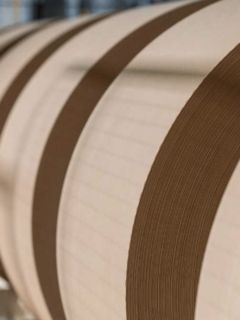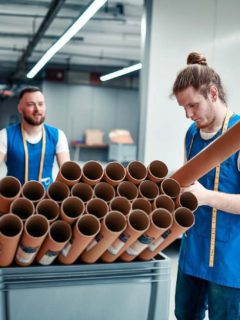Plastic is an artificial material made up mainly of petroleum and has a short life span, but a decomposition period of up to hundreds of years.Consumption of plastic has increased twenty-fold in fifty years. Because we are consuming resources faster than they are available, we need to develop plastic recycling so that we can continue to use it while reducing its environmental impact. How is plastic recycled? Which plastics are most suitable for sustainable development? What are the alternatives to plastics for your packaging? This article tells you everything you need to know about the subject..jpeg)
Plastic recycling: how far have we come?
In France, 5 million tonnes of plastic are used each year. We now know that
petroleum-based
plastic
is
no longer
suitable
for
recycling
- Polyethylene terephthalate (PET) is the best known type of plastic, transparent and flexible, used for the manufacture of plastic bottles.
- High-density polyethylene (HDPE): an opaque plastic, also widely used, for example in cosmetic packaging.
- Polyvinyl chloride (PVC): a rigid plastic, it can be used to make pipes or garden furniture.
- Low-density polyethylene (LDPE): used in particular for the design of certain food films.
- Polypropylene (PP): used mainly for certain types of food packaging.
- Polystyrene (PS): a protective plastic, it is found in the form of agglomerated balls.
- The last category includes other, more specific plastics, for example, a plastic designed for a specific medical use.
pET and HDPE are often the only plastics that can be recycled. The composition of the other five types of plastic makes their recycling too expensive
| A bioplastic is synthesised from biosourced and/or biodegradable materials, for example PLA, made from corn starch, is a common bioplastic. |
what are the recycling logos?
If you (or your suppliers) get eco-labels related to recycling, it is possible to display specific logos on your packaging to show your ecological commitment to your customers. What are the plastic recycling logos?
The Triman
 |
The logo has been used on packaging that is to be recycled since 2015, with the aim of harmonising sorting instructions and identifying all recyclable products. |
möbius ring
 |
A universal symbol of recycling, it means that the material constituting the packaging is technically recyclable, if the sorting instructions are respected, and if the collection system or recycling channel exists. The presence of the Mobius loop does not guarantee that the plastic packaging will be recycled, or that it is made of recycled materials. |
möbius ring with a percentage value
 |
It is a derivative of the previous logo and indicates the proportion of recycled material in the packaging on which it is affixed, but it does not indicate the recyclability of the product. |
|
did you know?
the green dot logo has not been used since 1 April 2021. Its meaning was confusing: many consumers thought that the packaging was recyclable. It simply indicated that the company selling the product was contributing financially to the recycling of the packaging by collecting and sorting it.An environmental score is also being considered. Its purpose would be to indicate to consumers which foods are the most environmentally friendly. This score is based on various criteria: the origin of the ingredients, the product’s recipe, the composition of its packaging, the production method, etc. The display of this eco-score is expected to take the form of lettering similar to the one used in household appliances. However, a score out of 100 is also being considered in order to refine the accuracy of the score for the same category of products. |
are there other eco-friendly alternatives to plastic recycling?
Recycling is one of the pillars of the 5Rs of packaging. This method presents 5 practices to adopt in order to implement a new, more eco-conscious and responsible packaging strategy. The complementary 4Rs are also sustainable alternatives to plastic recycling.
Reduce
The idea is to limit the use of packaging materials to the minimum necessary, or to avoid empty space in a package. The packaging thus adapts to the product to reduce raw material waste.Some packaging to meet this pillar
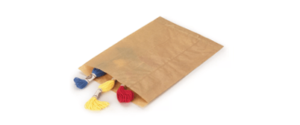 |
The flat economic kraft bag, practical thanks to its offset opening. |
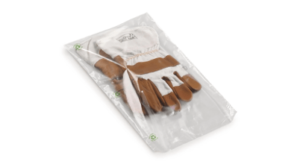 |
The recycled plastic bag, solid for perfect protection of medium-sized products. |
reuse
The principle is to avoid wasting resources by making use of existing packaging rather than creating new ones.Some packaging to meet this pillar
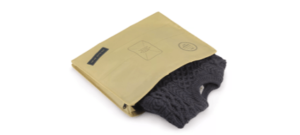 |
The opaque reusable shipping pouch, with a zip, tear-proof and waterproof, can be reused up to 100 times. |
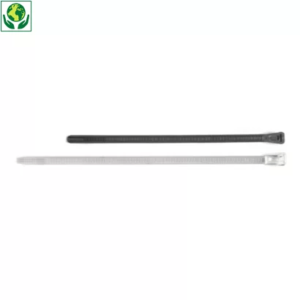 |
Reusable self-locking tie. |
replace
The idea is to favour a more eco-responsible solution to plastic while maintaining efficient packaging. Somepackaging to address this pillar
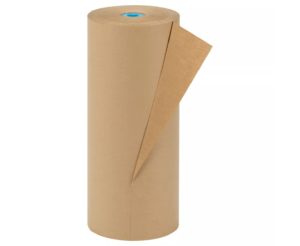 |
Recycled kraft paper on a roll, suitable for packaging heavy products with sharp edges, an effective alternative to plastic cushioning. |
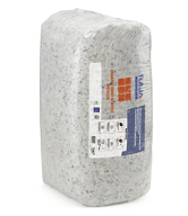 |
Recycled textile cushioning fibres, based on natural wadding, are light and expandable, and can replace bubble wrap. |
renew
The principle is to reinvent packaging by using materials designed from natural materials that are almost infinitely renewable: these are known as biosourced materials. Somepackaging solutions for this pillar
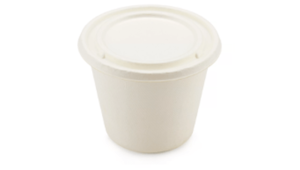 |
Compostable sugar cane bowl. |
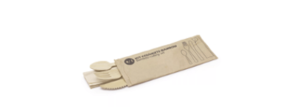 |
The bamboo cutlery kit, which is resistant to humidity and grease. |
to go further, discover 5 alternatives to plastic packaging to integrate into your eco-responsible packaging strategy. At present, companies are increasingly involved in plastic recycling. The process of recovering plastic is not unlimited, unlike glass recycling, for example. The main issue surrounding this subject? Reducing the consumption of petro-sourced plastic, to regulate waste production. Need to go further in your thinking about your packaging? Check out our article comparing cardboard packaging -vs- plastic packaging.














